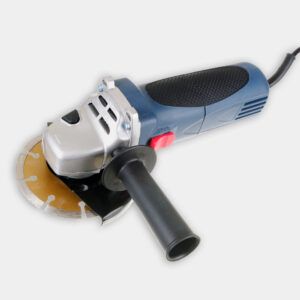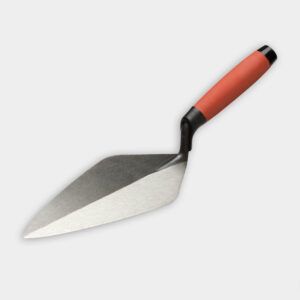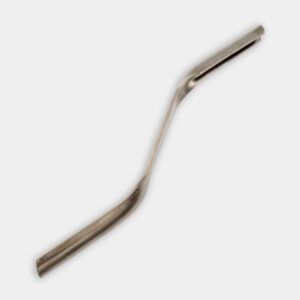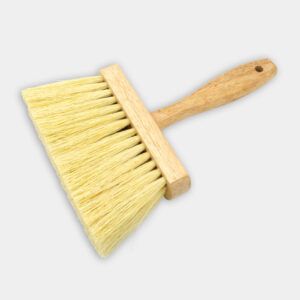Project details
Skill
Cost
Estimated Time
I have a good bit of missing or cracked mortar between the bricks on my front steps. How do I repair this so that water doesn’t cause any more damage? —JAMES BOHLER, CHARLOTTE, NC
This problem often occurs with mortars that are too stiff to accommodate the bricks’ expansion and contraction due to temperature changes. To fix your brick steps, you’ll have to cut out the old, failed joints and refill them with a type N mortar, which isn’t as hard and inflexible as type S or M mortar.
Steps for Repointing Brick Steps:
Step 1: Cut out all the masonry joints with a grinder
- Remove mortar to a depth of ¾ inch.
- The job can be extremely dusty so Mark used a masonry grinder with a vacuum attachment that connects directly to his HEPA vac. It’s also possible to use an angle grinder and vacuum as you go.
Step 2: Start with the horizontal lines first
- When you do the vertical ones after, you’ll create a pocket and feel the blade stop cutting before you hit the brick.
Step 3: Mix the mortar
- Type S mortar was used previously, much harder and more structural than what the bricks needed. It is the reason why the hairline cracks formed. Type N mortar is what should’ve been used and what Mark is using. It is strong but flexible enough to allow for the bricks to expand and contract during the freeze/thaw cycle.
- You’ll want the mortar wetter than normal if you’re using the grout bag technique so it comes out easier. But still, mix small amounts of water in at a time—you can always add more water but you can’t take the water out once it’s in there.
Step 4: Put the mixed mortar in the grout bag
- Load the grout bag about halfway, and twist its open end closed.
Step 5: Squeeze mortar into the joint
- This should be similar to icing a cake with a piping bag.
Expert Tip: A pointing trowel’s narrow blade fits between brick courses to press fresh mortar into joints. Masons often grind down the blade’s edges to customize the width.
Step 6: Follow with a flat jointer
- Press the mortar into the joints.
Step 7: Lightly brush the excess mortar off the brick
Step 8: Run the flat jointer over the mortar to slick the joint
- This will ensure that it is sealed and weatherproof.
- By doing this you do not have to water seal the stairs. When horizontal surfaces get water sealed, all the water stays on the surface of the material. This can be extremely dangerous and can cause someone to slip or fall, especially in the winter.
Resources
To grind out the old mortar, Mark used a 1775E Tuck Pointing Grinder with a 9 gallon dust extractor HEPA vacuum with automatic cleaning, which are both manufactured by Bosch Tools. Using a grinder with dust collection helps keep silica dust down, which makes the job a lot safer.
To mix the new mortar, Mark used a Type N Mortar Mix, which is manufactured by Quikrete. To pour the mortar into the joints, he used an Anvil Grout Bag, which can be found at home centers. The other tools he used, including the jointers and brushes, can all be found at home centers and masonry supply stores.




